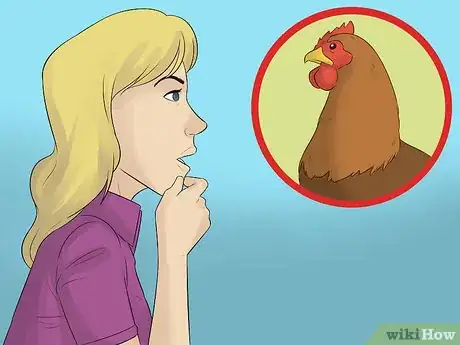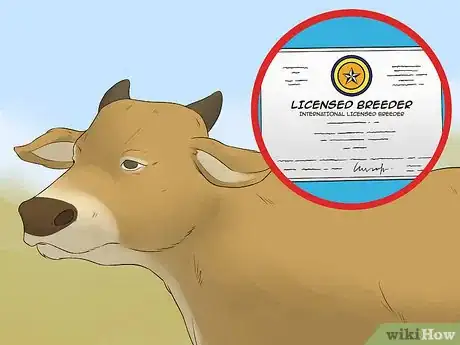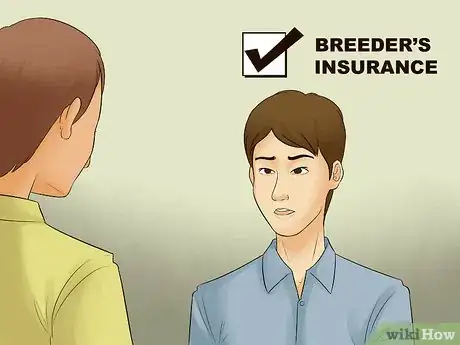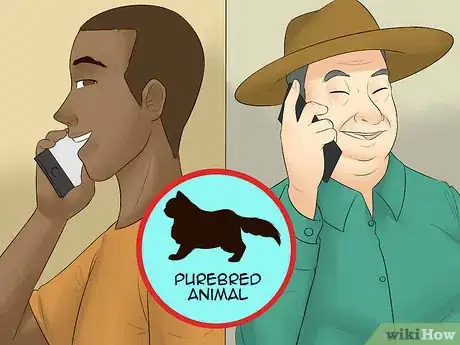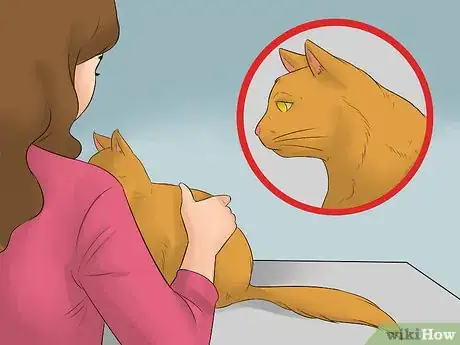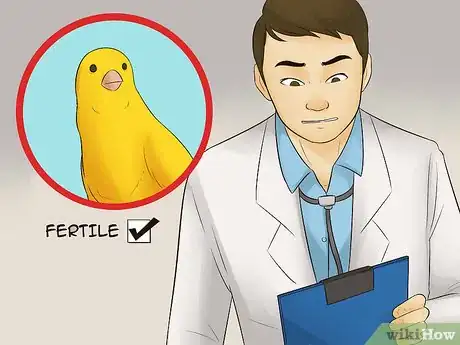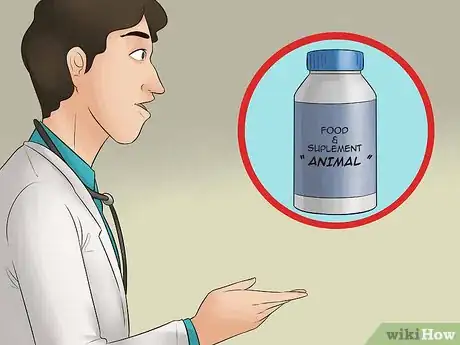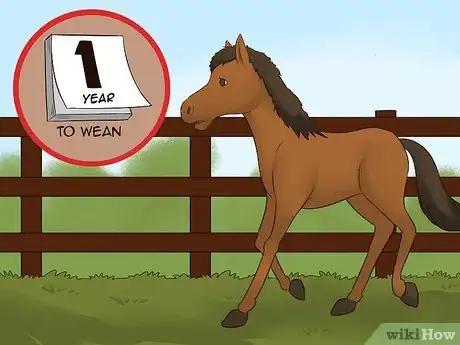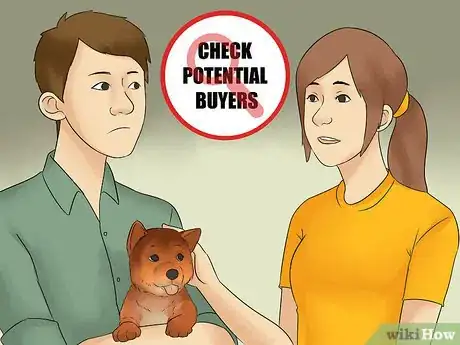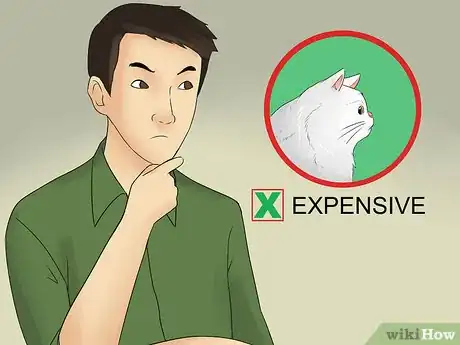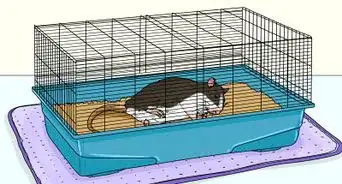This article was co-authored by April Power. April Power is a Dog Breeder and the Owner of Power Goldendoodles in Boise Idaho. She places her puppies all around the United States, specializing in breeding English Teddybear Goldendoodle puppies. In June 2020, We Love Doodles named Power Goldendoodles as one of the 9 Best Goldendoodle breeders who sell in California.
There are 17 references cited in this article, which can be found at the bottom of the page.
wikiHow marks an article as reader-approved once it receives enough positive feedback. In this case, several readers have written to tell us that this article was helpful to them, earning it our reader-approved status.
This article has been viewed 82,943 times.
Animal breeders mate and breed different animals.[1] Breeding is a fascinating and rewarding way to interact with animals, and it is a relatively lucrative career; the average salary of a breeder is USD$40,000.[2] Becoming an animal breeder should not be a rash decision, however, since it is often a very involved and difficult process. This article will help you decide if animal breeding is right for you and will show you how to get started.
Steps
Choosing an Animal to Breed
-
1Research breeding commitments. Animal breeders have many responsibilities, such as feeding, watering, and caring for animals, organizing medical procedures for newborn animals, and selling or rehousing baby animals.[3]
- The type of animal you decide to breed also impacts this.
- For example, breeding dogs to sell to families is very different from breeding cows to sell to farms.
- Whatever animal you choose, it is a huge responsibility.
-
2Set aside the money necessary for breeding. This is essential to take care of before beginning to become a breeder, and the amount necessary to begin will vary from animal to animal, but is expensive no matter what you choose. For example, the preliminaries for Malamute breeding puppies can cost more than $7,000, and this amount does not include vet checkups if the puppies are sick.[4]
- Although breeders make money, the amount you will earn depends on the animals being bought
- Animals that are sought after will make you more money.[5]
- You will not be able to begin selling a litter until after they are weaned, which can take up to a year depending on the animal.
Advertisement -
3Choose an animal to breed. Dogs, cats, and birds are the most common household pets, so consider these if you want to sell to families.[6] In general, livestock should be bred in a farm, whereas domesticated animals can be bred from a home. Exotic animals can only be bred in a zoo or by a professional organization.
- Only people with bachelor's and/or graduate degrees in veterinary science can work with these animals.[7]
- Keep a list of any animals that best fit your living situation.
- For example, if you live in an urban area, breeding farm animals or horses might not be the best idea.
- If you live on a farm, breeding chickens, dogs, or even bunnies would be okay.
-
4Research the animal you will breed. This is the most important step in the entire process because each type of animal requires specialized knowledge. Though an educational degree is not required to become a breeder, a thorough understanding of the animal you are going to breed is essential.[8] Use a search engine to look up the care required to breed a particular animal, such as bulldogs or a certain type of horse. Take notes on what type of animal seems to fit your lifestyle best.
- Type specific questions into a search engine, such as: “How do I breed lizards?” or “How do I care for baby bunnies?”
- Ask established breeders for advice.
- Libraries will also have many books on certain animals.
Obtaining a Breeder License
-
1Research breeding license laws specific to your area. Not all breeding laws are the same; for example, in California, breeding licenses are valid for one year, cost $335, and the animal being bred must be microchipped.[9] In Texas, however, licenses cost $300 if you have less than 25 animals, and the animal being bred does not need to be microchipped.[10]
- In a search engine, type “breeding license” and the state or area you live in.
- To breed animals legally, you must obtain a license.
- There are often specific rules, such as not being able to have over a certain number of animals and getting regular inspections.[11]
- Regulations may vary between state to state, so be sure to check if you need a license.
-
2Apply for the license. Once you've figured out the requirements for obtaining a breeding license, take the steps necessary to obtain the license. This will most likely include paying a sum of money and filling out an application. Often, applications can be found online, but your area may require you to visit the local department of animal services.
-
3Apply for breeder's insurance, just in case. You may be able to obtain this through your existing house or car insurance company. This type of insurance will provide coverage for any personal property damaged by the animals being bred, unexpected vet bills, and other expenses.[12] Ask an insurance agent for more information.
Obtaining the Animals
-
1Decide whether you want both male and female animals. It is not mandatory for you to own both the male and the female animal: you could own the female and pay to breed with someone else's male, own the male and pay to breed with someone else's female, or own both the male and female. The upside of owning both is not having to negotiate contracts with other breeders.
- You may prefer having a male to breed with other females.
- Not having a female means you will not have to care for newborns.
- Or, you may enjoy having a pregnant female and her litter to care for.
-
2Research other breeders of the animal you want to breed. Whether you choose to buy just a male, just a female, or both, finding animals with high-quality bloodlines is important. You also want to make sure any animal you buy or breed with is healthy. Keep a contact list of potential breeding partners who offer quality animals for sale.
- If you won't own both the male and female, ask potential breeding partners what percentage of the sales you will get.
- Thoroughly check the background of any animal you consider breeding with.
- Asking for the animals registration papers; this is especially important if you are breeding a specific, purebred animal.
-
3Purchase healthy animals to begin breeding. Sick animals often vomit or have diarrhea, are lethargic, or have missing fur.[13] Research the animal you are going to breed, and know what illness in that particular animals looks like.
- In a search engine, type the animal you want to breed and “symptoms of illness.”
- For example, cat breeders should type in “cat symptoms of illness.”
- Spend time learning about what illness in the animal looks like. This way, you will know if animals you buy are healthy.
Breeding the Animals
-
1Breed the animals. Most female animals have a estrous cycle, which means they can become pregnant at certain times; breed the animals regularly and often to ensure impregnation.[14] Just like humans can have fertility issues, animals can, too, so if the female is not getting pregnant, ask a vet to make sure both are fertile.
- Some species, such as birds, are also known to be picky and may not like a certain male or female.[15]
- Take the female to a vet regularly to figure out if she is pregnant.
- mammals typically get chubby when pregnant but it can be difficult to tell if a bird is.
-
2Care for the pregnant mother. Every animal requires different types of care, but in general, you should take the mother to the vet regularly and provide the mother with proper nutrition. Ask a vet what type of food and supplements you should give to the mother.
-
3Help the mother deliver her babies. This will often not require a trip to the vet because animals give birth with much more ease than humans do.[16] Provide the mother with a comfortable, quiet area, and allow nature to take its course.
- Even animals that do not give live birth, such as birds, will need a comfortable nesting area.
- Don't allow visitors and strangers to bother the mother at this time.
- Once the newborns are delivered, take them and the mother to the vet.
-
4
Selling the Animals
-
1Advertise your litter. Once you have healthy newborn animals that are weaned from their mother, you can now sell them. Newspapers often have classified ads, and many animals are sold online.
- Post on your social media pages to advertise your animals.
- Ask your local vet if you can hang flyers in their lobby about the newborn litter.
-
2Screen any potential buyers. Check that potential buyers know how to, can, and will correctly care for the animal. If you feel uncomfortable with someone for any reason, you can refuse to sell them an animal. Ask that you be able to view where they intend to keep the animal, and that they give you updates. Some questions you can ask are:
- Do you have any other pets?
- Can you financially afford this animal?
- Who will be the animal's primary caretaker?
-
3Offer reasonable prices. A simple online search will reveal the amount animals are being sold for. Aim to price your animals similarly to others. If your animals are unreasonably expensive, people will not buy them.
Expert Q&A
-
QuestionHow long does it take for me to get AKC papers for my puppies?
 April PowerApril Power is a Dog Breeder and the Owner of Power Goldendoodles in Boise Idaho. She places her puppies all around the United States, specializing in breeding English Teddybear Goldendoodle puppies. In June 2020, We Love Doodles named Power Goldendoodles as one of the 9 Best Goldendoodle breeders who sell in California.
April PowerApril Power is a Dog Breeder and the Owner of Power Goldendoodles in Boise Idaho. She places her puppies all around the United States, specializing in breeding English Teddybear Goldendoodle puppies. In June 2020, We Love Doodles named Power Goldendoodles as one of the 9 Best Goldendoodle breeders who sell in California.
Dog Breeder The AKC application with the form takes very little time to send in and get back. I would say less than two weeks.
The AKC application with the form takes very little time to send in and get back. I would say less than two weeks. -
QuestionDo I have to sell the bred animals?
 TippyPenelope123Community AnswerNo, you don't need to but you will then have a lot of animals in your house. It may also be good not to breed as there are so many animals in shelter.
TippyPenelope123Community AnswerNo, you don't need to but you will then have a lot of animals in your house. It may also be good not to breed as there are so many animals in shelter. -
QuestionIs it difficult to become a licensed dog breeder?
 Community AnswerIt depends on the state or country you want to a license in. Some are more difficult than others. Search for the actual details for your area to find out the steps.
Community AnswerIt depends on the state or country you want to a license in. Some are more difficult than others. Search for the actual details for your area to find out the steps.
Things You Will Need
- A sizable fund to begin the breeding
- A breeder's license
- Breeder's insurance
References
- ↑ http://careers.stateuniversity.com/pages/7822/Animal-Breeder.html
- ↑ https://www.sokanu.com/careers/animal-breeder/salary/
- ↑ http://www.myjobsearch.com/careers/animal-breeder.html
- ↑ http://omalmalamutes.com/omal/littercost.htm
- ↑ http://www.myjobsearch.com/careers/animal-breeder.html
- ↑ https://www.avma.org/KB/Resources/Statistics/Pages/Market-research-statistics-US-pet-ownership.aspx
- ↑ http://study.com/articles/Animal_Breeder_Information_About_Starting_a_Career_as_an_Animal_Breeder.html
- ↑ http://careers.stateuniversity.com/pages/7822/Animal-Breeder.html
- ↑ http://www.laanimalservices.com/laws-policies/permits/breeders-permit/
- ↑ http://www.tdlr.texas.gov/bre/brefaq.htm#l6
- ↑ https://www.bah.state.mn.us/dogs-cats
- ↑ http://trupanion.com/breeder
- ↑ http://pets.webmd.com/features/pet-symptoms-6-signs-illness-dog-cat?page=4
- ↑ http://www.uwyo.edu/wjm/repro/estrous.htm
- ↑ http://www.hartz.com/Birds/Getting_Started/starting_a_bird_family.aspx
- ↑ https://www.americanscientist.org/article/why-is-human-childbirth-so-painful
- ↑ https://www.aspca.org/pet-care/dog-care/weaning
- ↑ http://www.sciencedaily.com/releases/2011/10/111006084028.htm


